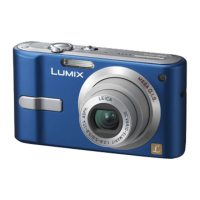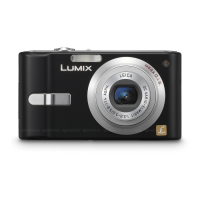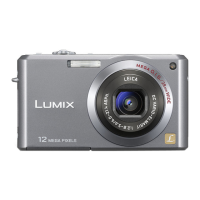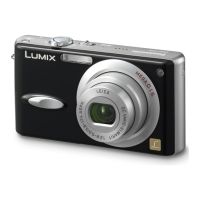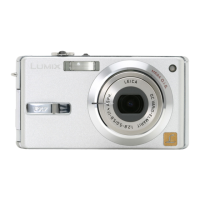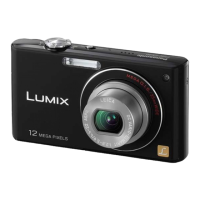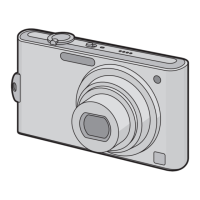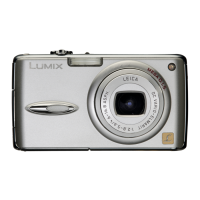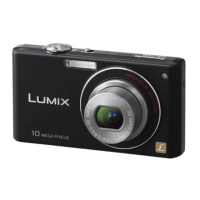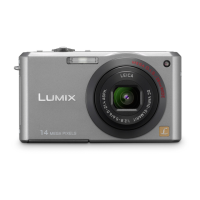
Do you have a question about the Panasonic LUMIX DMC-FX150 and is the answer not in the manual?
| Brand | Panasonic |
|---|---|
| Model | LUMIX DMC-FX150 |
| Category | Digital Camera |
| Language | English |
Provides essential safety precautions and warnings for operating the camera.
Instructions on how to handle and protect the camera from damage and malfunction.
Procedure for charging the camera's battery pack before first use.
Information on battery life, charging time, and recordable picture counts.
Instructions for safely inserting and removing memory cards and the battery.
Details on the camera's internal memory and compatible memory card types.
Guide to setting the camera's internal clock for accurate date/time stamping.
Key settings within the setup menu for clock, sound, and display.
How to switch between different shooting modes for optimal results.
Guidance for beginners using the camera's intelligent auto mode for easy shooting.
Instructions for using Program AE mode for more control over shooting settings.
How to use optical, extra optical, and digital zoom for framing shots.
Enabling AF tracking to follow a subject's movement for continuous focus.
Details on which settings are fixed or can be adjusted in Intelligent Auto mode.
How to achieve sharp focus, including AF area and difficult subjects.
Methods to avoid blur from camera shake using stabilizer, tripod, or self-timer.
Reviewing recorded pictures in normal playback mode, with fast forward/rewind.
Enlarging pictures during playback to inspect details.
Procedures for deleting single or multiple pictures from the camera.
Guide to selecting and using the camera's built-in flash for various shooting scenarios.
Adjusting exposure settings to manage differences in brightness between subject and background.
Instructions for manually setting aperture and shutter speed for creative control.
Guide to selecting scene modes for optimal settings based on shooting conditions.
Mode for recording video clips with audio, capturing motion.
Guide to accessing and adjusting settings within the recording mode menu.
Setting the resolution (number of pixels) for still pictures.
Adjusting the compression rate for storing pictures, balancing quality and file size.
Automatically adjusting ISO sensitivity and shutter speed to minimize subject jitter.
Manually setting light sensitivity (ISO) for better performance in dark conditions.
Adjusting the camera's color balance to match the light source for accurate colors.
Selecting the method for measuring scene brightness to determine exposure.
Choosing the focusing method based on subject position and number.
Compensating for camera jitter during shooting to produce clearer images.
Steps to transfer pictures from the camera to a computer for viewing and management.
Guide to printing pictures directly from the camera to a PictBridge-compatible printer.
Connecting the camera to a TV using AV cable for viewing pictures on a larger screen.
Important warnings and advice for safe and optimal camera usage.
Identifies functions with limitations based on modes or operational conditions.
Solutions for common camera problems related to power, recording, and display.
Technical details of the digital camera, including sensor, lens, and connectivity.
